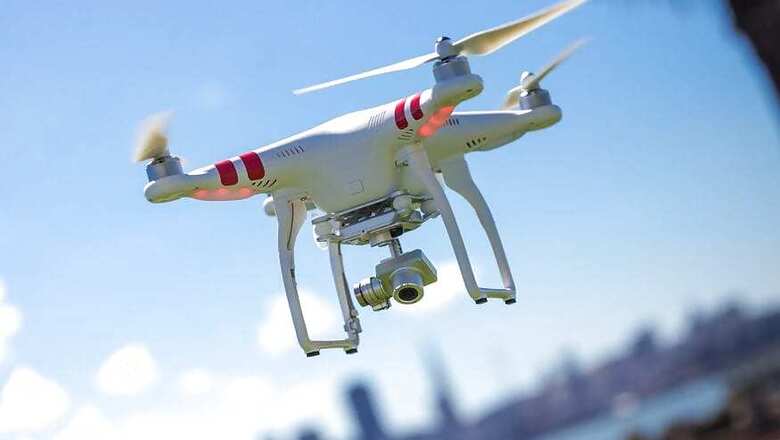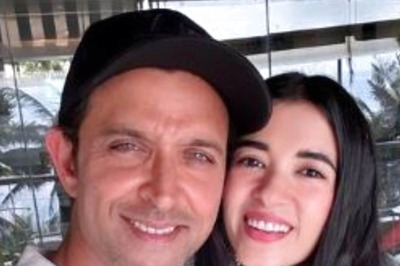
views
The ambiguity around owning and subsequently flying drones in India, is finally coming to an end. The Director General of Civil Aviation (DGCA) has announced the policy for the use of Remotely Piloted Aircraft (RPA), autonomous aircraft and model aircraft in India—and the drones fall under this umbrella. The new rules come into effect from 01 December 2018, with clear guidelines about the classification of each of these aircraft categories, the fly zones and approvals that govern usage of these machines.
The government of India classifies drones under the Remotely Piloted Aircraft (RPA) category. “Remotely piloted aircraft (RPA) is an unmanned aircraft, which is piloted from a remote pilot station. A remotely piloted aircraft, its associated remote pilot station(s), command and control links and any other components forms a Remotely Piloted Aircraft System (RPAS),” states the policy.
The policy has classified the drones into multiple categories, according to the weight. A drone classified in the ‘Nano’ category will have a weight less than or equal to 250 grams. Slightly bigger drones will be classified as ‘Micro’, and will weigh between 250 grams to 2kg. If your drone weighs between 2kg to 25kg, it’ll be classified in the ‘Small’ category. The ‘Medium’ category drones will weigh between 25kg to 150kg. The final category is called ‘Large’, for drones weighing more than 150kg.
If you wish to buy a drone, remember that you can perhaps buy or even carry home from abroad a drone that classifies in the ‘Nano’ category. However, if the drone that you wish to procure weighs more than 250 grams, there is the requirement to apply for import clearance from the DGCA and will require a Unique Identification Number (UIN), Unmanned Aircraft Operator Permit (UAOP). This will be a part of the Digital Sky platform, for handling these applications and allotments.
If we are to look at some examples of drones made by a company called DJI, the Spark weighs 300 grams, the Mavic 2 Pro tips the scales at 907 grams while the higher spec Phantom 4 Pro will weigh 1375 grams. The Spark, as it turns out, is their "fun mini drone" and the lightest they make. As things stand, you'll have a tough time finding a drone weighing below 250 grams, which means chances are you will have to go through the process for approvals.
There is slight complication that we’ll need to wrap our heads around, with regards to different rules for different category of drones and other autonomous flying aircraft. A Nano RPA, including drones, operating below 50 feet in uncontrolled airspace or indoors do not need to apply for permissions. A Micro RPA however, operating below 200 feet in uncontrolled airspace or indoors does not need permission from the DGCA but you will need to inform local police 24 hours prior to operating the device.
The policy further states, “Model aircraft (MTOW up to 2kg, without any payload) flown below 200 feet inside educational institution premises will not require UIN and/or UAOP. Aero-modellers/recreational flyers under this category shall be fully responsible for its operation, safety and security. They shall inform the local police authorities before undertaking such activities even for indoor operation.” The policy however does not specify is the police permission step needs to be taken only for RPAs and drones being used for commercial purposes only or for just any usage scenario including hobby use.
The policy states that for drones and unmanned aircrafts that require DGCA permissions, those will be granted as the UAOP within 7 days of application, as long as all the documentation is in place.
The policy also states when and how you can fly and operate these machines. The policy states that the RPAs can only be operated by someone more than 18-years of age, should have passed 10th exam in English language and undergone training as per the DGCA guidelines.
There are detailed do’s and don’ts guidelines for RPAs and drones, including that they can be operated during the daytime (specified as between sunrise and sunset), within Visual Line of Sight (VLOS) only, minimum ground visibility of 5 km and cloud ceiling not less than 450 m and no rain or thunderstorm.
There are clear guidelines about the no-fly zones. And that is an exhaustive list. Some inclusions:
1. Within a distance of 5 km from the perimeter of airports at Mumbai, Delhi, Chennai, Kolkata, Bengaluru and Hyderabad, within a distance of 3 km from the perimeter of any civil, private or defence airports, other than Mumbai, Delhi, Chennai, Kolkata, Bengaluru and Hyderabad.
2. Within 25km from international border which includes Line of Control (LoC), Line of Actual Control (LAC) and Actual Ground Position Line (AGPL).
3. Beyond 500 m (horizontal) into sea from coast line provided the location of ground station is on fixed platform over land.
4. Within 3 km from perimeter of military installations/ facilities/ where military activities/ exercises are being carried out unless clearance is obtained from the local military installation/facility.
5. Within 5 km radius from Vijay Chowk in Delhi. However, this is subject to any additional conditions/ restrictions imposed by local law enforcement agencies/ authorities in view of the security.
6. Within 2 km from perimeter of strategic locations/ vital installations notified by Ministry of Home Affairs unless clearance is obtained from MHA.
7. Within 3 km from radius of State Secretariat Complex in State Capitals.
8. From a mobile platform such as a moving vehicle, ship or aircraft.
9. Over eco-sensitive zones around National Parks and Wildlife Sanctuaries notified by Ministry of Environment, Forests and Climate Change without prior permission.
If the RPA that you are flying meets with an accident or causes any damage, the policy states that the RPA operators must have insurance with the liability that they might incur for any damage to third party resulting from the accident/incident.
Any violations in the usage of drones will be acted upon under the provisions of the Indian Penal Code and the Aircraft Act 1934.
Also read: Intel Foresees a Future of Drone Traffic Jams, And Has Tech to Prevent Them From Colliding




















Comments
0 comment